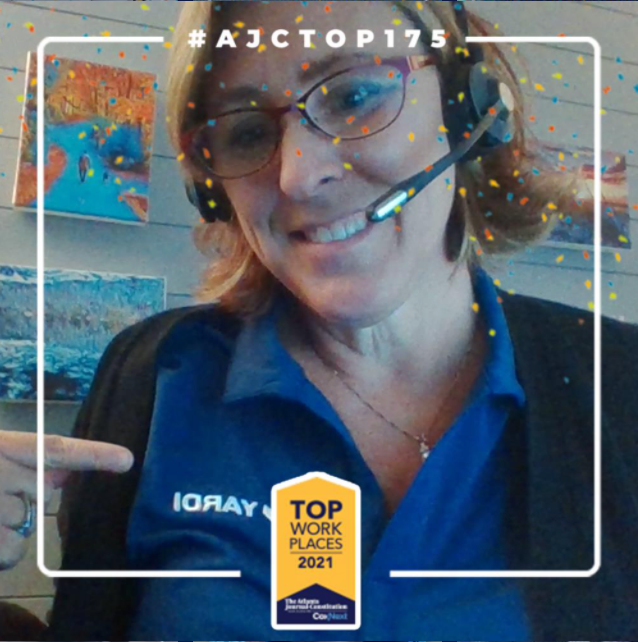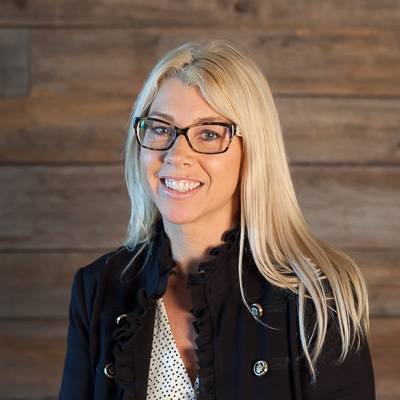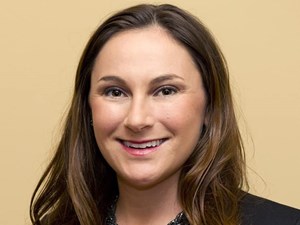Better to act than take on the risks of inaction. This was the theme of a recent GWA webinar, in which panelists discussed ways to minimize risk and future-proof a coworking or flexible workspace operation. “The biggest risk is the risk of not doing anything, of not reacting to the market,” said Dan Zakai, co-founder and CEO of Mindspace, a coworking space with locations in Europe and the U.S. By now, we see that the office experience as we knew it is being reimagined. Landlords need to pivot to a hospitality experience in order to safely and effectively welcome tenants and workers back. They need to provide amenities that workers don’t have at home, or offices will see low occupancy given that productivity levels did not drop from the couch, kitchen table or home office. According to Zakai, landlords will raise occupancy levels with coworking faster than with traditional long-term leases. One of the biggest challenges is whether to spend the initial cost on coworking, whether that is building out a new coworking space or transitioning a vacancy. Since landlords typically won’t operate the space, it makes choosing the right partner critical. Giovanni Palavicini, principal at Avison Young, believes one of the keys to success for operators is finding a niche. Much like hotels have seen the growth of boutique offerings, the coworking industry should head in the same direction. This was already a growing trend prior to the pandemic and could accelerate now. Picking the wrong operator with a business model unsuited for your location, or a poor deal structure could create significant risk. “I don’t like RFPs because an RFP allows anyone in the door,” Palavicini said. “Because at the end of the day, we want to figure out who we want...
Commercial Space Management...
CoreNet Real Estate Week
The first annual CoreNet Corporate Real Estate Week was a success! The virtual international conference aims to “commemorate, educate, inform, and connect the world to all that our often under-recognized profession does to advance the economy.” More than 40 sessions offered insights and networking to commercial professionals globally. Three sessions educated attendees on the benefits of flexible workspaces and the tools available to manage them. The benefits of hybrid workspaces The “Hybrid Working and the Ubiquity of Space” session offered attendants the opportunity to explore best practices in hybrid work models. Panelists presented practical ways that landlords and employers can optimize hybrid work models by adopting flexible workplaces and customized software. Switzerland-based IWG CEO Fatima Koning and Gareth Haver, CEO for the Asia-Pacific, Africa, and Northern, Central and Eastern Europe regions shared what’s working for them: “The office is not in one place any longer—it is everywhere,” said Koning. She observed that flexibility and mobility rank high on tenant demands. Traditional office space is not obsolete, but employees want (and often need) the ability to work from different settings. This includes but is not limited to their homes. “Traditional models will no longer accommodate the workplace and workers of the future. The new standard of hybrid work promotes efficiency and connectivity, and technology is a big part of that. More advanced and empowered technology can enhance not only occupancy planning but also the overall work experience,” said Koning. While the pandemic expedited the adoption of remote work policies for many commercial companies, the trend towards remote work has been on the rise for years. Employees gain a better work-life balance, shorter commutes, and designated time for collaboration. Haver adds that employees aren’t the only ones to benefit from hybrid models. Employers gain: lower costs...
COVID-19 Rental Housing Support Initiative
Yardi Sponsors Industry Initiative
Supporting the rental housing sector through the pandemic and beyond is a priority for the industry’s preeminent technology provider. Yardi is the primary sponsor of the COVID-19 Rental Housing Support Initiative. The project is a collaboration of The Institute of Real Estate Management (IREM), National Apartment Association (NAA), National Multifamily Housing Council (NMHC) and National Association of Residential Property Managers (NARPM). The project continues to release new resources in the areas of mental health, legislative support, liability information and media. A summary of those now available (as of March 25) follows: Mental health resources: Mental health resources can help housing providers and renters alike. Find videos and other content on coping with isolation, cultivating resiliency, managing anxiety and handling financial stress. Legislative support: Accurate data and information is important for decision-makers as they facilitate ongoing emergency assistance programs. These resources help leaders understand the size and impact of the rental housing sector. Legislative educational resources are now available. Liability information: Property owners and operators must keep up with the latest laws and federal guidelines as they pertain to housing. The project liability resources help ensure compliance with changing legislation. Media support: The engaging “Rental Housing Industry Myth Quiz” is a way to educate the public and provide details about the pandemic impact for rental housing industry owners and operators. In mid-2020, Yardi committed $1 million to supporting COVID-19 Rental Housing Support and the programs developed by this initiative. “With nearly 40 million Americans living in apartments, the rental housing industry plays a critical role in housing them safely and securely. We are delighted that the four major associations who serve the rental housing industry – NAA, NMHC, IREM, NARPM – will share knowledge, develop industry benchmarks, research new ways of operating and provide forward-thinking solutions for the benefit of residents, owners and the rental housing industry,” said Anant Yardi, president and founder of Yardi. “Yardi is committed to supporting the multifamily industry for the duration of the pandemic,” said Esther Bonardi, vice president of marketing at Yardi. “Our company mission is dedicated to supporting our clients and communities, and in this case the entire rental housing realm is part of that community.” Explore all of the support resources online at covidinitiative.rentalhousingindustry.org....
AJC Top Workplaces
Recognizes Yardi Atlanta
The Atlanta Journal-Constitution (AJC) heralds Yardi among Top Workplaces in Metro Atlanta. Yardi ranked 45th out of 3,268 nominated employers. It is described as “a large global software corporation with an unwavering focus on quality software and customer satisfaction.” To celebrate the achievement, Yardi Atlanta hosted a virtual watch party. Employees tuned in to watch the awards ceremony while enjoying their favorite snacks and beverages. Attendees also explored a virtual photobooth. They posted their pictures and testimonials to the Yardi Atlanta Confluence page. Learn more about Yardi as one of Atlanta’s Top Workplaces. Get to know Yardi Atlanta The Yardi Atlanta office is located in the suburb of Roswell, about 22 miles north of the city. The town offers an appealing mix of progressive eateries, historic buildings, parks and cultural events. RentCafe.com ranks Roswell among one of the most affluent neighborhoods for renters in metro Atlanta. The Atlanta office serves as home base for more than 370 of the company’s nearly 3,600 U.S. employees. Though most employees now work in remote environments, the office has managed to maintain a sense of camaraderie through virtual events. #YardiLove Valentine’s Day party, Halloween Week, and continued charitable outreach helps employees feel united while working apart. Corporate culture is just one of the reasons why Yardi Atlanta made the list as one of the top places to work in metro Atlanta. How AJC chooses top workplaces The 11th annual Top Workplaces list is a collaboration between The Atlanta Journal-Constitution and employment research and consulting firm Energage. To form the list, employees nominated 3,268 of their employers. Philadelphia-based Energage then narrowed the list to 244 companies, each of which agreed to participate in a no-cost program and survey. The short list of companies represents 56,160 workers in the metro Atlanta...
Senior Living Ebook
Marketing with RentCafe Reach
Online searches have become the favored route for seniors seeking a residential community. That’s why senior living community operators increasingly turn to search engine optimization (SEO) to help prospective residents find their properties. A powerful tool supporting that effort is RentCafe Reach Senior Living, an advanced online marketing services solution that enables execution of SEO plus pay-per-click advertising, social media posting and reputation management from a single platform. Yardi is spreading the word about this platform and the online marketing experts who support it with a new ebook, titled “4 Ways to Get Found Online.” The publication illustrates how RentCafe Reach Senior Living: Creates an exceptional online presence that fills vacancies. Increases traffic with optimized content that positions communities for maximum search visibility. Drives leads with impactful ad campaigns, managed by AdWords specialists. Keeps pace with Google’s algorithm changes. Formulates and executes a full marketing plan tailored to a community’s goals. Engages prospects with curated social media local content and boosted posts. Strengthens reputation control by monitoring and responding to online reviews. As the ebook says, “The right digital marketing strategy makes all the difference, but building out a plan – and sticking to it – takes dedicated resources, consistent research and lots of elbow grease.” Read it to discover how RentCafe Reach Senior Living makes the process much easier and...
Tips for Thriving
With Senior Living Marketing
The senior housing industry is taking steps to transitioning from the COVID-19 era with policies that emphasize safety and resident service. Nicole Moberg, COO of Atlanta-based Thrive Senior Living, offers insight into successfully marketing senior communities during and after the pandemic. Below are excerpts from her recent interview with Multi-Housing News. How has the outbreak impacted Thrive Senior Living communities? Moberg: From early on, we were one of the first senior living communities to prioritize testing—backing our belief that every resident and team member should be tested as often as possible for the safety of the residents as well as our community. We also developed the “Take Off to Thrive” marketing concept, with a 30-day new resident communication checklist. This served to minimize resident isolation and loneliness and even included an adapted red carpet “landing day/move-in” experience. We view our communities as the safest place to be [with our] proper training and education, personal protective equipment, disinfection procedures and aggressive COVID-19 testing programs. How have your marketing strategies changed? Moberg: We pivoted by creating COVID-19 sales strategies including altering our messaging to focus more on care and safety and how we can help people during challenging times. Digitally, we worked to bring on a chief storyteller who showed a behind-the-scenes look at Thrive culture, created a YouTube channel to share online content to increase awareness when families could not visit and increased online presence as we allocated more toward digital spend to drive more traffic to our website. We saw increased sales throughout the pandemic with safely executed event activity. What role does technology play in your marketing? Moberg: We sourced a new video app that allows us to send videos to prospects as a follow-up; a platform to enhance virtual tours; a “thank you”...
Pennrose Prevails
Affordable Housing in Annapolis
The demolition of a decrepit public housing project in Annapolis, Md., is making way for new memories and a brighter future for families. The project is six years in the making and will boost the quality and quantity of affordable housing in the city. New growth in Annapolis Yardi client Pennrose recently broke ground on the Newtowne 20 project. The redevelopment site will be home to 78 much-anticipated affordable housing units. Families can choose between one-, two- and three-bedroom floorplans. Most units will surround a central garden while others stack the perimeter. A 3,500-square-foot community center, basketball court and playground accentuate the property. “Through persistence and determination, we have reached a great milestone in the rebuilding of this great community,” said Melissa Maddox-Evans, Executive Director/CEO of the Housing Authority of The City of Annapolis during the virtual groundbreaking ceremony. “We thank all of our partners for their hard work and support as we move forward with the construction phase. We are glad our residents will be able to have this opportunity for a new start for themselves and their families.” Patrick Stewart, Regional Vice President at Pennrose said, “We’re excited to continue our partnership with HACA as we transform outdated public housing into a vibrant, pedestrian-friendly neighborhood with high-quality affordable housing, community amenities and open green space.” He continued, “Today’s milestone brings us one step closer to completing this full-scale revitalization and welcoming residents back into their new, modern homes.” Neighborhood revitalization offers new opportunities to existing residents The site of Newtowne 20 is the former home of 810 Brooke Court, a public housing project constructed in 1971. After more than 50 years, the site is receiving a new lease on life with high-quality, energy efficient units. Existing residents of the neighborhood will benefit from...
Faster Answers
For Senior Living Providers
With multiple communities each submitting up to 200 invoices every month, Linda Adams was shuffling a lot of paper. The accounting manager for Burlington, Mass.-based senior living provider Northbridge Companies spent much of her time digging up receipts or tracking down paper records across numerous decentralized offices. “When I had questions, I had to call another office for answers. They’d have to find the invoice, scan it and send it to me for review. It was very time consuming for all concerned, she recalls.” But now, solving a discrepancy at any property is easy thanks to Yardi PayScan, which is part of the Yardi Procure to Pay Suite, a single connected solution for supply procurement, invoice processing and vendor management. Yardi PayScan allows the accounting department to access invoices and check whether payments have cleared without having to pick up the phone to call another office. In other words, team members could self-serve, reducing internal dependencies and churn. But time savings wasn’t the only benefit. Yardi PayScan eliminates copying, mailing, and storing paper—and minimizes touch points that can lead to lost invoices and data entry errors. “There’s no need for us to use up valuable office space with paper invoices anymore when everything we need is available electronically. Once the tax returns are done, we can throw the documents out,” Adams says. “I can go back and look at invoices from 2012, and they’re right there. Plus, it really cuts down on all that lugging paper back and forth when I work from home.” Adams and the rest of the Northbridge Companies team also appreciate the versatility of Yardi PayScan. “You can make the approval process as intricate or as easy as you want, which I love,” says Adams, noting that custom workflows, flexible...
Bozzuto Expands West
Multifamily Industry Update
Yardi client Bozzuto recently announced its expansion into the west coast! With the right people and technology in place, Bozzuto positions itself for growth and success in the new frontier. Bozzuto: spring heralds growth for the property management company In 33 years, Bozzuto has grown into one of the largest property management companies in the United States. The company currently has a presence in 11 markets along the East Coast as well as a properties in Chicago and Milwaukee. In total, Bozzuto manages 85,000 apartments and 2.5 million square feet of retail space. Moving forward, the Greenbelt, Md.-based property management company is setting its sights on the Pacific Coast. Bozzuto’s first West Coast projects will take place in Washington and California. Read how the Bozzuto Group increased online prospect engagement with RentCafe. Expansion requires the right people and the right tools. The property management leader recently hired Heather Wallace as the managing director of Client Services. Wallace brings 20 years of experience in operations, acquisitions and development for real estate firms. She previously served as a senior executive with Sares Regis Group. Bozzuto Management Company president Stephanie L. Williams says, “The addition of Heather Wallace ensures that Bozzuto will continue to grow through thoughtful and strategic relationships.” Williams continues, “We hold ourselves to the highest standard of delivering the exact same extraordinary experience our customers have come to expect, across our portfolio.” For tools, Bozzuto relies on scalable property management technology by Yardi. Bozzuto + Yardi, growing together As a foundation for its sustainable growth, Bozzuto sought technological solutions that facilitated efficiency, innovation and scalability. Bozzuto turned to Yardi for property management, accounting, procurement, business intelligence, asset management and marketing solutions. Through nearly 20 fully-integrated products and 17 years, Yardi and Bozzuto have grown...
Expanding Entertainment...
For Senior Living
Many senior living community operators are finding creative new ways to broaden their residents’ entertainment and activity options. In fact, Forbes reported in November 2020, entertainment has emerged as a marketing differentiator. “Many [seniors] are sharpening their focus on independent-living communities that not only provide creature comforts and an aesthetically pleasing brick-and-mortar living environment, but hospitality-inspired entertainment, trips and outings enabling highly-sought connections. Saying, in effect, ‘Let us entertain you,’ is good business for senior living communities.” That’s why “savvy senior communities are emphasizing the delivery of socially focused programming to bring mature adults together in fun, entertaining and educational ways once they’re safely able to drop the masks and rub shoulders again.” Even before the lockdown, “many retirement communities [were] stepping up to the challenge and redefining what fun looks like,” according to Denver-based Spectrum Retirement Communities. “If you were used to hosting get-togethers with friends and family, there’s no reason for that to change after moving to a senior living community,” said Brad Kraus, the company’s president and chief executive officer. “Those of us in charge of planning entertainment need to focus on designing activities that are elevated, purposeful and the entire family can experience.” Spectrum once sponsored a nationwide gingerbread house design competition with residents, team members and family members. One community in Texas came up with 3-foot-tall creation made of 600 sugar cookies, six buckets of frosting and 30 pounds of candy. Another in Colorado created Pike’s Peak facsimile. Spectrum residents have also participated in volunteer activities involving pet shelters, waste reduction programs and homeless support, among others, “Why not make it possible for residents to continue giving back to the community with their family by their side?” Kraus says. “It’s our job to create that possibility. We want to...
Aspire Available
For Senior Living
Yardi Aspire gives senior living community operators the tools to train their staffs in everything from software skills and compliance to company policies and career development. The system’s convenient on-demand course content and documents help teams work more productively and efficiently. What training topics can be covered through Aspire? Everything from clinical skills, safety, new employee orientation and health records compliance to leadership, time management, software applications and more. As an added benefit, users seeking to customize training can build their own content and add pre-built videos. Equally important, users can create, maintain and administer courses without adding IT resources. The system also accommodates courses from other learning management systems while offering convenient esignature and employee survey capabilities as well as collection functionality for other types of surveys. “Aspire projects energy, forward focus and confidence. When employees feel those emotions at work, they are positioned to gain career skills and make a difference in their organizations. That’s exactly what Aspire brings to our clients through its broad scope of features,” says Terri Dowen, senior vice president of sales for Yardi. Learn more about how Aspire can pave the way for better community management for residents, operators and family...
Reimagining Canadian Office Space
More Flexible + Healthier Space
How is the commercial real estate landscape changing and how do we adapt? How will we apply those learnings to our future as a technology innovator? These questions have been on the mind of the team at Yardi Canada as well as on technology providers worldwide. Commercial asset managers require flexible workspaces and integrated technology to adapt and thrive. Those foundations pave the way for greater efficiency, resilience and human-centric design. To further explore trending implementations of destination workspaces and integrated technology, a recent “Future of the Work Place” webinar hosted by The Empire Club of Canada provided valuable insights. More equitable, accommodating and accessible workplaces It begins with considering occupant safety. Yardi Canada is an occupier of offices in Toronto, Vancouver and Saskatchewan with 400 employees across the country. In addition to following provincial COVID guidelines, we are considering the very nature of the employee-workplace relationship and how that relationship may change to promote more equitable occupant wellbeing. During the webinar, Infrastructure Ontario president Toni Rossi explains, “Can tenants make it safely to work? Once there, can they work in healthy conditions? It is not just about feeling safe in a space, because that’s personal. It’s about leaving their homes and getting to work safely, and working safely, because more people (these days) have the responsibility to care for the elderly and for young children.” For managers of all asset classes, the pursuit of equitable workspaces encourages the creation of healthier environments for all occupants, including service workers and vendors who may not have remote work options. Previously overlooked spaces, such as control rooms, could be reconfigured to accommodate worker wellbeing. With such considerations in place, large office spaces can maintain their appeal and with the right technology, they can be managed remotely. Revisiting open floor plans and measures of productivity While the pandemic has challenged the popularity of open floor plans in residential real estate, commercial landlords are experiencing greater demand on this front. Yardi Canada agrees with the panelists concluding that open concept workspaces will continue to demonstrate value for commercial tenants. Before the pandemic, tenants who opted for open floorplans were looking to drive work environments that encourage teamwork, learning and creativity while supporting social activities. These spaces continue to serve the same purposes while offering the added benefit of social distancing without feeling isolated, open concepts permit a functional and healthy use of space. The open space also encourages inclusion and wellbeing in the workplace. Tenants can provide greater consideration to their employee’s work preferences, integrate biophilic design principles throughout the office and take advantage of amenities such as wellness rooms. Panelists acknowledge that many workplaces will uphold a hybrid model of in-office and remote work options. Sarah McKenzie, independent consultant – Innovation and Future of Work observes that the “office will likely shift from a central destination for all employees to a more fluid ‘hub’. Its use will fluctuate based on the needs of occupants.” At Yardi, we are engaging with employees regarding remote work and flexible, in-office options. Multiple factors will influence our decisions, from productivity to company culture and employee wellness. Such engagement, however, paves the way for workplaces that are both client-focused and employee wellness-centred. Asset managers would benefit from innovative tools to manage such flexible workspaces, offering access to tenants as a value-added service. Foundational tools for the future Asset managers must have access to reliable data to efficiently address the unique and changing needs of tenants. There are a lot of innovative products being developed in the industry today. The first step is to implement technology to streamline and automate processes which will promote greater efficiencies, increase insights and enhance decision making. With this as a base, leadership can take the next steps to create the vision of that future workspace. Technology that seamlessly combines portfolio health, tenant risk, deal management, budgeting and construction in a single connected...
Health at Home
Vaccinations for HACLA + EAH Residents
As a company grows, it can be challenging to maintain a personal connection with the communities that it serves. When two international chains and a national housing provider behave like good neighbors, communities take note. CVS, Walgreens and EAH Housing have teamed up to provide in-house immunizations for seniors and other vulnerable groups. Rapid changes in senior living communities Seniors have faced unique challenges during the pandemic. To protect vulnerable residents, senior housing providers were required to cancel conventional family visits, group excursions and most daily outings. With ample creativity, staff members helped seniors thrive during quarantine. But undoubtedly, seniors missed time with their families and trips outside of the community. Additionally, seniors had to embrace technology in new ways. Seniors are a tech savvy bunch, and technology adaptation comes with health benefits. The new approach to health care, however, replaced many in-person office visits with telehealth options. Seniors again found themselves on unfamiliar terrain. The COVID-19 vaccine could save lives. It would also provide a safe way for seniors to resume a somewhat normal lifestyle. But with cases on the rise, venturing outside of their communities to access the vaccine posed risks of its own. Senior housing providers such as EAH Housing sought means to bring vaccinations to residents. CVS, Walgreens, and the Center for Disease Control (CDC) answered the call. Walgreens and CVS answer the call to serve seniors Yardi client and affordable housing provider EAH Housing recently announced that residents are receiving Pfizer-BioNTech COVID-19 vaccinations. The initiative is part of an immunization clinic provided by Walgreens and CVS. Residents and staff of Reflections at Barbara Ann in North Hollywood were among the first recipients of the vaccine in January. This month, the site completes the second dose of the program. Reflections...
Mental Health Resources
Rental Housing Support Initiative
Yardi sponsored The Mental Health Resource Library from the COVID-19 Rental Housing Support Initiative to help users navigate the pressures, challenges and unknowns of life during and after the pandemic. The library is just one piece of a content collaboration of The Institute of Real Estate Management (IREM), National Apartment Association (NAA), National Multifamily Housing Council (NMHC) and National Association of Residential Property Managers (NARPM). You can learn more about all aspects of the Rental Housing Support Initiative here. Exploring the Mental Health Resource Library The Mental Health Resource Library offers tools to help manage changes in your home, work and social environments. Explore dozens of videos, articles and other media that are practical and easy to understand. While there is a lot of content, it is divided into categories that make it easier to get started. You can: Learn how to cope with isolation Discover how to adapt and bounce back after life changes Establish a sense of ease in the face of worry and anxious feelings Take control of your money to manage financial stress For optimal emotional, physical and mental health, we must learn to manage the changes in our environment. The Mental Health Resource Library provides tips, new perspectives and life hacks that bring change management within reach. Click here to explore the Mental Health Resource Library. Building a library takes a village The COVID-19 Rental Housing Support Initiative is proudly sponsored by Yardi. This collaboration between leading industry organizations offers solutions in key support areas. Each component meets the growing demand for research and education that can help the industry survive and thrive through the pandemic and beyond. Learn more about the Rental Housing Support...
Online Marketing
Ebook for Senior Living
Knowing what not to do is as important as understanding what should be done. That’s a key takeaway from a new Yardi ebook designed to help senior living communities market their offerings effectively. “8 Do’s & Don’ts for Senior Living Community Websites” offers tips for sprucing up digital curb appeal, maximizing the impact of a website’s most visited pages and more. The list of “dos” includes showing multiple views of a floor plan, helping prospects identify the unit that meets their needs and boosting traffic by sharing images on social media. The “don’ts” address rising above a bad user experience, avoiding inferior photography, not expecting photos to speak for themselves and resisting the impulse to mimic competitors. Looking for new ways to use your marketing website to make your senior living community both more visible and more appealing to prospective residents? Read the ebook for all the do’s and don’ts of getting those prospects to your page and into your...
Returning to the Office
With creativity and technology
The past year has been full of challenges from a traditional office perspective. These challenges have come in a series of phases — initially sending employees home for an indefinite amount of time, implementing physical and tech upgrades to safely welcome workers and guests into offices, creating a potential hybrid working model to accommodate distancing in the workspace and now waiting on sufficient vaccine distribution that will encourage more employees to return to the office. As we look at the progress we’ve made toward re-entering physical workspaces, there is still a great deal of uncertainty as to when occupancy will return to pre-COVID levels. On a recent Realcomm webinar, a group of panelists was asked when they thought their offices would return to some sort of normalcy. Their answers varied: “When we hit 50% occupancy could vary, especially in California with its restrictions,” said Stuart Appley, managing director at CBRE. Appley suggested that around September he believes they could reach 30% capacity in office. CBRE Group is the largest commercial real estate services company in the U.S., and it employs a workforce of more than 100,000. Last fall, the firm formally changed its global headquarters address from California to Texas, where it already has a significant presence, handling property management, leasing and development services for Dallas and Fort Worth office space, as well as other commercial real estate assets. Susan Gerock, CIO and vice president of IT at Washington REIT, says she’s hopeful to be at 50% occupancy “at some point in the fall, but many companies won’t even try to start bringing people back until September.” Joe Rich, senior vice president at Related Companies, and Ilan Zachar, CTO at Carr Properties, both pushed their timelines out a bit further, with Zachar saying his customers believe the end of 2021 will bring some normalcy, while Rich admitted that a return to 100% occupancy is unlikely to happen at all in his opinion. This is a significant cause for debate among industry leaders, because while there is a chance that 100% occupancy is a thing of the past, there is a wide range of guesses as to what working models will look like long term. Once the pandemic is “over” in terms of social restrictions, all signs point to the elimination of a standard 9 a.m. to 5 p.m., Monday to Friday schedule. Whether it’s fewer hours or fewer days in office, employees who have the ability to fully function remotely will do so more often than they did before March 2020. “This trend was occurring before the pandemic, but this just accelerated it,” Rich said. As Zachar mentioned, 25-30% of Carr Properties’ workforce was remote pre-COVID. Many companies were not worried about a drop in productivity when sending employees home, but were concerned about missing out on the tangible benefits to being in an office. Interpersonal relationships and hallway conversations cannot be duplicated on Zoom or Microsoft Teams. In the same manner that the office will lose its appeal, city centers are losing their vibrancy when workers aren’t in the offices. With studies showing that New York City is below 20% office occupancy, Rich expressed concerns about how viable this is for businesses throughout Manhattan and other major hubs. “Our vibrancy is currently at risk,” he said. “We can’t work without public transport.” The concern over mass transit use is one of the principal factors affecting a slow return to physical workspaces. Dallas, Houston, Austin and Philadelphia have all seen significantly higher number of employees returning to office than New York, Chicago and Washington, D.C, the latter three much more dependent on mass transit usage. Leveraging the right technology The panel made a point to differentiate between two unique sets of technology. “COVID tech” are advances such as thermal scanning, virtual conferencing and contact tracing which became necessary due to the pandemic. The second category, tech to encourage people...
Industrial Thrives
Says CommercialEdge
Industrial real estate continues to see strong rent growth and high demand, driven by pandemic-prompted online shopping trends. Industrial rents averaged $6.44 per square foot in January, a 5.1% increase over the last 12 months, according to a new CommercialEdge Industrial National Report. Even as vaccinations ramp up and more people return to more normal-looking lives, demand for industrial is expected to stay strong. New leases signed in 2020 often included premium pricing, with the average rental rate for new leases signed in the last 12 months at $7.50 per square foot. The average vacancy rate was 6.0%. Continued demand for industrial space will sustain rent growth and drive vacancy rates lower. “We expect that demand will continue to increase even if e-commerce does not match its blistering 2020 growth rate. E-commerce has a continued role to play, and last year likely signaled a structural shift in consumer preferences more than temporary changes in behavior. Retail as we knew it has changed, and in its place warehousing and distribution have increased in importance,” say analysts. An improving global economy, ramped up trade volume and inventory replenishment for retailers will be additional drivers. Sector investment activity is healthy and growing as well. The fourth quarter of 2020 now has the highest sales volume of any quarter since Yardi Matrix began collecting industrial data, with $11.9 billion of sales completed. Properties fetched an average price per square foot of $100, an 18.2% increase year-over-year. Find more trend and data insights in the latest national industrial report from CommercialEdge. CommercialEdge provides extensive property data that includes transaction, ownership and debt information, offering nationwide coverage across all commercial real estate asset types. Use the platform to uncover vital market data and get insights with the latest lease and...
Validus Senior Living...
Adapts Quickly to New Norms
Lindsey Hacker is the CFO of Tampa, Fla.-based Validus Senior Living, which manages facilities for independent living, assisted living and memory care in Florida, Georgia, Louisiana and Texas. Hacker joined Validus in 2017. Here she offers insight into the twin challenges of providing exceptional care while innovating. The following is excerpted from an interview published in Multi-Housing News. How have you been ensuring the safety of residents and staff since the onset of the health crisis? What changes do you expect to be temporary and what is here to stay? Hacker: Like most of the world, our entire operating model needed to shift very quickly to ensure the safety of our residents and teams. Mask usage, hand hygiene, social distancing and personal protective equipment are now second nature. We screen all associates and any vendors or visitors and take their temperatures prior to allowing entrance to the building. Our cleaning process and solutions changed to using nontoxic chemicals against COVID-19 and performing more frequent cleaning. We added ultraviolet light technology, which is not common in assisted living. These UV light cabinets give our teams the ability to sanitize and disinfect items in less than 5 minutes—perfect for high-touch items like keys, phones, eyewear and our iCare technology devices. I think the pandemic has made us have a stronger focus on all aspects of infection prevention, so although we are hopeful we will not have to remain 6 feet apart, many of the other precautions will remain. Now that vaccines have become available, how is Validus approaching the vaccination process? Hacker: We are approaching it with education, positive reinforcement and role modeling. For our residents, we are seeing very high participation rates, which is very encouraging and not completely surprising since this generation saw polio...
Highest-Ranking Office Sales
Of the last 20 years
Since 2000, the U.S. office market has witnessed a good share of trophy deals, which is usually a sign of strong market conditions. Using CommercialEdge data, the following is a review of the top 50 office deals of the last 20 years. Specifically, the report looked at office buildings of at least 50,000 square feet in size and mixed-use properties that have more than 50% office space (for further details, read our methodology). Additionally, the report highlights major deals in the Northeast, Midwest, South and West, as well as best-selling Class B office spaces and properties less than 250,000 square feet in size. #1 Office Deal of the Last 2 Decades: $2.8 Billion Sale of GM Building New York City occupies the first 12 spots within the list of top office deals of the last two decades – an unsurprisingly dominant presence in the ranking. As for office deals outside of New York City, only 11 transactions made the cut — with more than half of those being portfolio deals. The highest-ranking office deal from outside New York City was the $1.64 billion Century Plaza portfolio in Los Angeles. Sold by General Motors in 2014, the three-building portfolio totaling 3.3 million square feet placed 13th. Boston features four entries on the list, led by 500 Boylston and 222 Berkeley in 23rd place. EQ Office sold the 1.3 million-square-foot Boston office space to a joint venture between Oxford Properties Group and JP Morgan Chase in 2015 for $1.3 billion. Notably, several buildings were sold twice since 2000, fetching top prices each time. One such property is the General Motors Building in Midtown Manhattan, which also ranks as #1 office sale since 2000. Boston Properties paid $2.8 billion for the office tower located at 767 5th Ave. in 2008. The office tower had previously been sold in 2003 for $1.4 billion — landing it in 18th place for a second entry on the top 50 list. Another property with double entries in the list is the News Corporation Building, anchored by media giant Fox News. Located at 1211 Avenue of the Americas, its $1.52 billion sale in 2006 was the first sale to land it a spot on the list — in 15th place. Then, in 2013, Montreal-based Ivanhoe Cambridge acquired a 51% stake in the property for $855 million, enough to hand it the 50th position on the list. Highest-Ranking Office Deal of 2020 Falls Short of $1 Billion Mark for First Time Since 2012 In 2020, the $900 million sale of 330 Madison Ave. landed in first position, followed by the $810 million transaction of the former Master Printers Building — both in New York — and the $729 million sale of 245 Summer St. in Boston. It’s worth noting that the last time the leading office sale of the year was less than the $1 billion threshold was in 2012. At that time, Singaporean wealth investment fund GIC Real Estate paid $851 million for the 48-story 101 California in San Francisco. Likewise, the highest-ranking office deal in the West last year was the $664 million deal for the Transamerica Center in San Francisco, which was closed by a joint venture between SHVO and Deutsche Finance. In addition to the iconic Transamerica Pyramid, the transaction also included the 185,000-square-foot office building at 505 Sansome St. and the 52,000-square-foot property at 545 Sansome St. By comparison, Apex Capital Investments closed a $187 million deal last December for the 352,000-square-foot Grand 2 at Papago Park Center in Tempe — the priciest sale of a Phoenix office space for rent in 2020. Two other transactions of Tempe office buildings close out the ranking, trading for less than half of that amount: Discovery Business Campus – Northern Trust III for $65 million, and the Park Bridge and Park Garden at Fountainhead Corporate Park for $62 million. To the west, there was a much tighter race for the first...
Kern County
Selects Rent Relief by Yardi
The Housing Authority of the County of Kern, headquartered in Bakersfield, Calif., will implement Yardi’s Rent Relief cloud-based software to support its Emergency Rental Assistance program. As an administrator of federal stimulus funds directed towards helping households and landlords recover from the economic impacts of COVID-19, Kern expects to disburse millions in funds over the coming months. The emergency rental assistance program is designed to prevent loss of housing by supplementing rent payment for households impacted by the pandemic and by helping landlords keep current with mortgage payments. Kern County weighed the merits of several software providers before selecting Yardi. “Centralizing emergency rental assistance onto an end-to-end, single platform that tracks everything from initial application to executing payments will make us more efficient and enable us to operate with complete transparency. Yardi has a documented history of processing millions of monthly financial transactions as well as creating cloud-based interfaces for end users and housing staff. I expect Rent Relief will leverage that experience for the benefit of our community and staff,” said Stephen Pelz, executive director of the Kern County Housing Authority. Rent Relief powered by Yardi is a new solution that leverages decades of technology development and client support. Rent Relief offers portals for households to submit applications for assistance including easy upload of supporting documentation. Kern County housing staff will be able to log on to view and process applications, disburse funds to renters and landlords and easily produce the data for state and federal oversight offices. “Yardi is committed to help agencies keep renters housed as we endure the pandemic. We have nearly four decades of experience developing this type of full-service technology,” said Chris Voss, vice president of affordable housing at Yardi. Learn more by visiting RentRelief.com or attend an upcoming webinar. State and local...




















